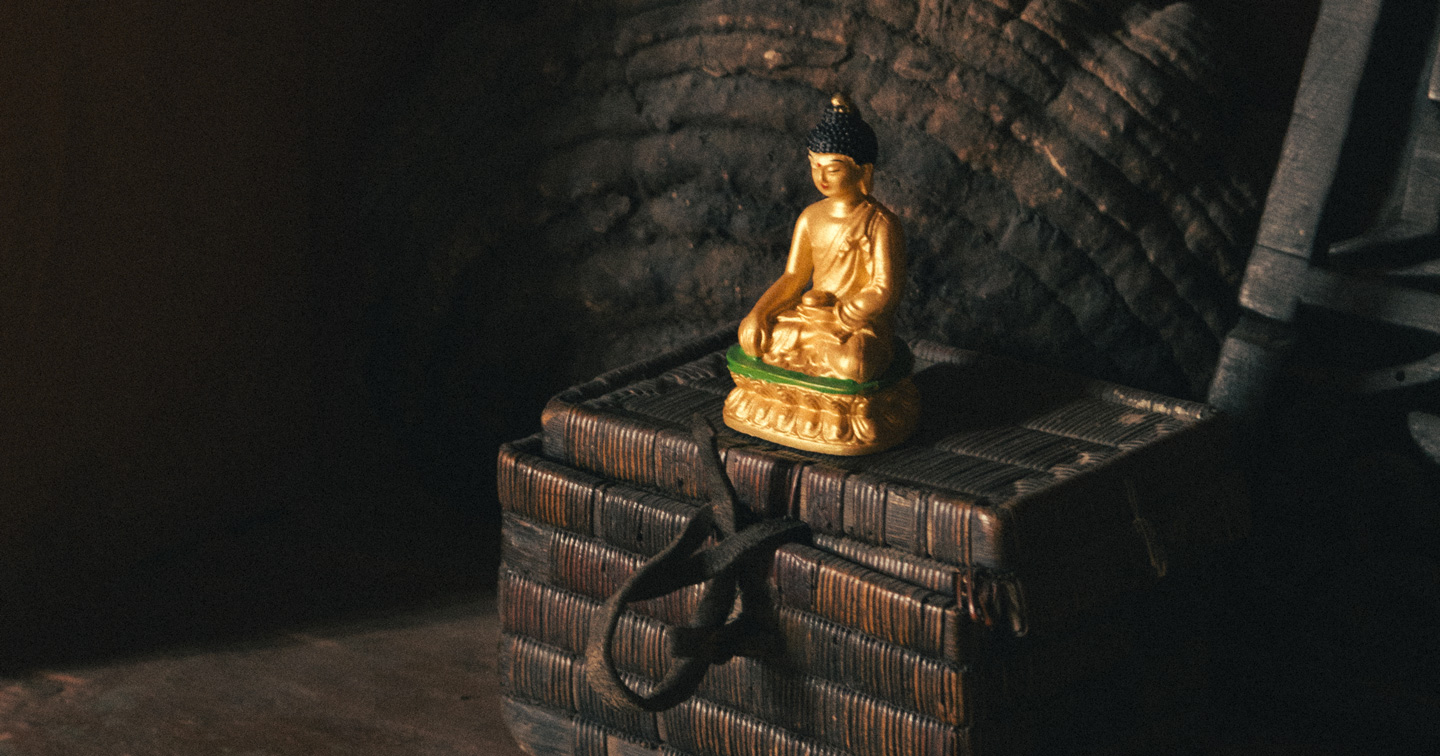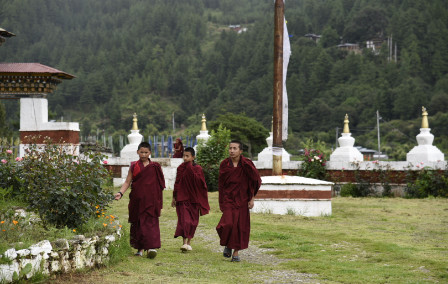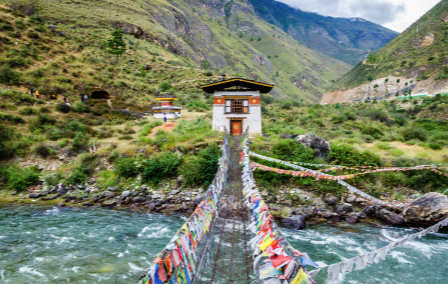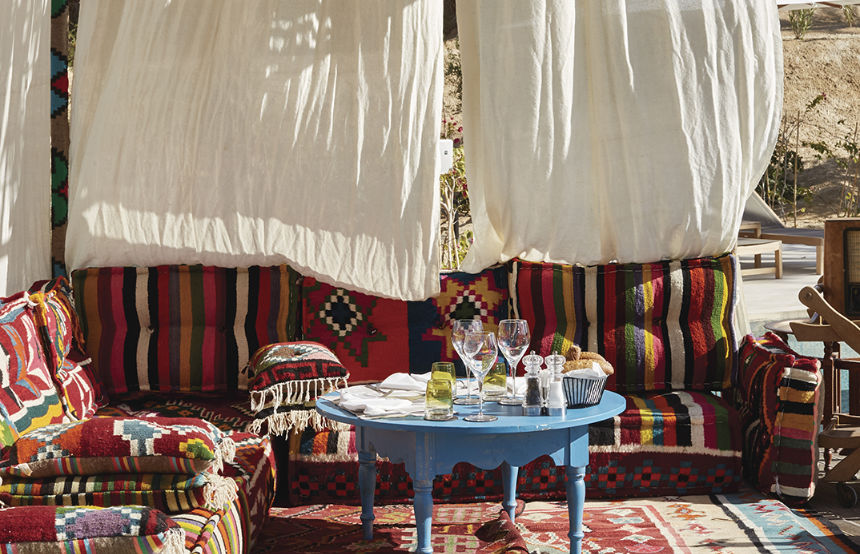Published 30th May. 2024
Reading time
Bhutan is a pioneer in sustainability. Not only was it the world’s first carbon-negative country, but this tiny Buddhist kingdom, nestled in the Himalayas between Tibet and India, is committed to the well-being of its civilians and environment above all else. Bhutan’s philosophy is based on Gross National Happiness (GNH), an index devised in the 1970s by the fourth king of Bhutan. Measuring 33 indicators including sustainable socio-economic development, cultural preservation and environmental conservation, it’s no wonder that Bhutan leads the charge in responsible tourism. The Bhutanese government has done much of the heavy lifting, but how can tourists play their part? Read our guide to sustainable tourism in Bhutan…
1. Undertourism Bhutan
2. Philantourism in Bhutan
3. Community-based tourism in Bhutan
4. Indigenous tourism in Bhutan
Overtourism is something of an alien concept in Bhutan. Since opening its doors to tourists in 1974, the Land of the Thunder Dragon has adopted a ‘high value, low impact’ tourism policy, charging a Sustainable Development Fee (SDF) of $100 per day to overseas tourists. The fee is put towards protecting the environment, upgrading infrastructure, improving wages and ensuring good working conditions for Bhutanese civilians. Travelling to Bhutan may carry a high price tag, but you’ll keep a clear conscience, knowing your visit positively supports the nation’s development. Simply by visiting (and paying the SDF), you’re practising Undertourism – championing a destination that is least frequented by tourists. Head to off-the-beaten-track destinations such as the biodiverse Zhemgang or the sparsely inhabited Gasa districts for bonus points. Where else on the planet can you enjoy dramatic Himalayan peaks and beautiful dzongs (fortified monasteries) in solitude? Sustainable tourism in Bhutan is truly exemplary.

While Bhutan’s policies ensure tourist spending is not wasted, there are still ways we can contribute to effective sustainable tourism in Bhutan. This is where our concept of Philantourism takes centre stage: the practice of choosing a destination that stands to gain the most from tourism. In fact, choosing to visit Bhutan is an act of Philantourism in itself, as is opting to stay in locally-owned lodges instead of chain hotels and dining in local eateries away from the tourist traps. You can also help contribute to inhabitants’ livelihoods by purchasing handcrafted goods, such as yak hair products; dappa, traditional Bhutanese wooden bowls; sugarcane and bamboo crafts; and gift wrap, cards and notebooks made from Bhutanese paper. The latter's abundance is thanks to a forest cover exceeding 70%; the South Asian nation has even set the ambitious (and impressive) target of maintaining at least 60% forest cover in the future.
Community-based tourism is simple. Tourists engage in enriching and authentic local experiences, all the while knowing that their money goes (and stays) in the pockets of local communities. One such experience is trekking the heavenly Himalayas – obligatory in this spectacular country. On the community-led five-day Dagala Thousand Lakes trek, you’ll pass serene alpine lakes such as Hentsho and Relitsho, while on shorter treks, you’ll find yourself face-to-face with the famous Tiger’s Nest Monastery. Let your guide lead you up and up to reach the cliffside feat set amidst fluttering prayer flags. Perhaps a local lesson in archery (the country’s national sport) is more up your street, so why not grab a traditional bamboo bow and arrow? Another way to get involved with the community is to join a cooking class. In the village of Phomdrong, learn how to make bumthap putha – a buckwheat noodle traditional to the Bumthang region – at a family’s farmhouse. Sustainable tourism in Bhutan never looked more enticing.

Responsible Indigenous tourism is crucial to Bhutan’s sustainability; helping preserve traditional ways of life integral to the nation’s cultural heritage. Making up an estimated 15 per cent of Bhutan’s total population (just shy of 800,000 people), Indigenous peoples are collectively known as the Drukpas, with the main ethnic groups being the Ngalops, Sharchops, and Lhotsampas. One way to practice responsible Indigenous tourism is to stay with native families. In the remote village of Merak, for example, semi-nomadic Brokpa families are known to open their doors to guests in the absence of hotels. Expect warm hospitality and delicious bowls of ema datshi (a popular Bhutanese dish of chillies, cheese and rice). In Bhutan, festivals are also a mainstay in the annual calendar. Head to the Nomad Festival in the Bumthang Dzongkhag district to witness a celebration of nomadic culture, where traditional dance, dress, yak shows and authentic cuisine abound. Other festivals to visit include Nimalong Tshechu and Paro Tschechu, which pay homage to the saint Guru Rinpoche, who first brought Buddhism to the kingdom in the ninth century.
Written by Hannah Whitehall | All images by Romain Laprade

Exploring under-the-radar destinations can be difficult, but with the help of our passionate consultants, you’ll discover Bhutan like a local. With recent research trips under our belt, we have up-to-date knowledge of the best properties and experiences, from Punakha’s valleys to Paro’s peaks. Our expert guides and drivers will accompany you throughout your journey, allowing you to explore our personalised picks of hidden villages, mountainside monasteries and ancient wonders at your own pace.
ENQUIRE NOWPractical advice and inspiration for your next trip

We love championing under-the-radar countries, and our Asia specialist, Frances, took the road less travelled on a research trip to Bhutan. Far from the tourist bustle, Frances got stuck into Bhutanese traditions such as archery, stretched her legs on beautiful hikes and soaked sore muscles afterwards in heavenly hot stone baths. She left the country with a deep love for it and brimming with tips and tricks to elevate your stay.
14th August 2024 - Bhutan Travel Tips

With its dramatic landscapes that include everything from subtropical plains to steep mountains and valleys, Bhutan is a seriously dreamy destination when it comes to hiking holidays. And while the Bhutanese Himalayas may be home to the highest unclimbed mountain in the world, Gangkhar Puensum, there are a number of more accessible trails that criss-cross the stunning countryside and can be completed in a day.
12th November 2021 - Bhutan Adventure

There’s more to Tunisia holidays than blissful beaches. History buffs are in luck with plenty of UNESCO World Heritage sites to explore, while architecture enthusiasts can admire the coastal towns’ white-washed facades. If natural wonders are more up your alley, Tunisia’s vast salt flats and towering palm groves are a must-see, while the artisanal treasures in the Medina of Tunis await those on a souvenir search.
9th December 2025 - Tunisia Travel Inspiration

Our team of destination experts will get to know you and your unique requirements for your holiday

We work with you to build an ultra-personalised holiday itinerary with your choice of accommodation, experiences and activities

All of our holidays include little extras designed to make a big difference to your trip, from fast-tracking you through airport check-in and security to our network of local Concierges